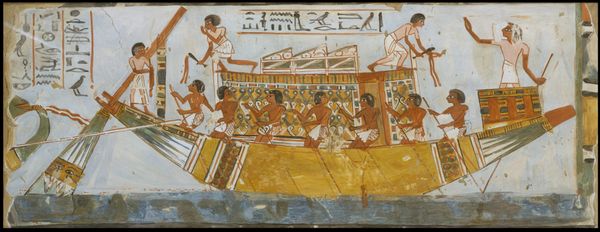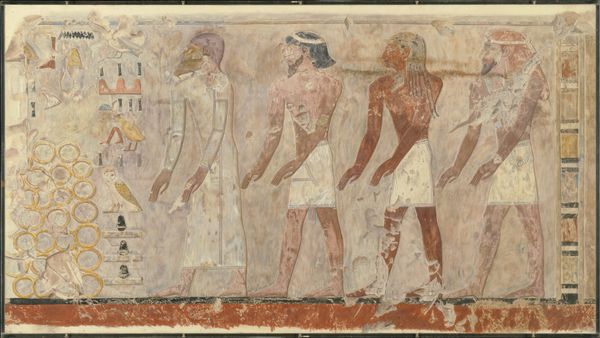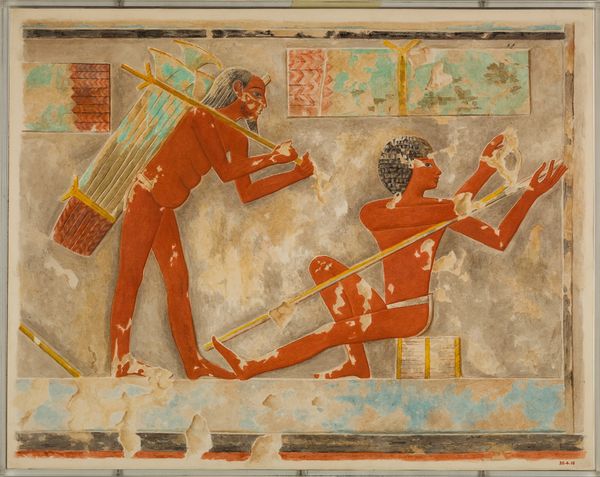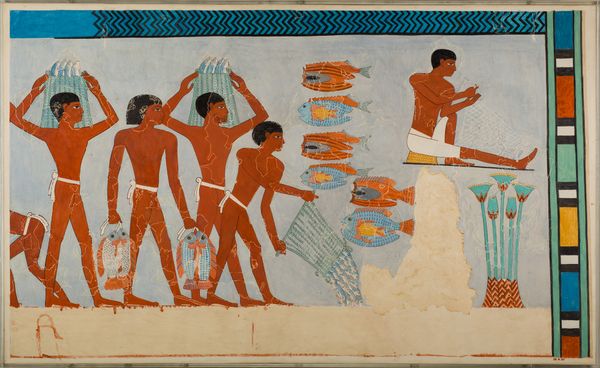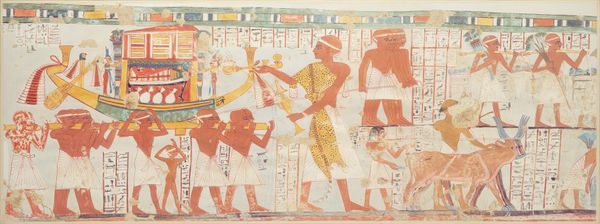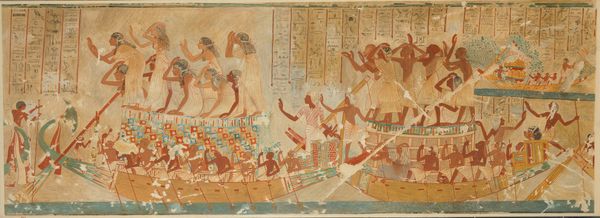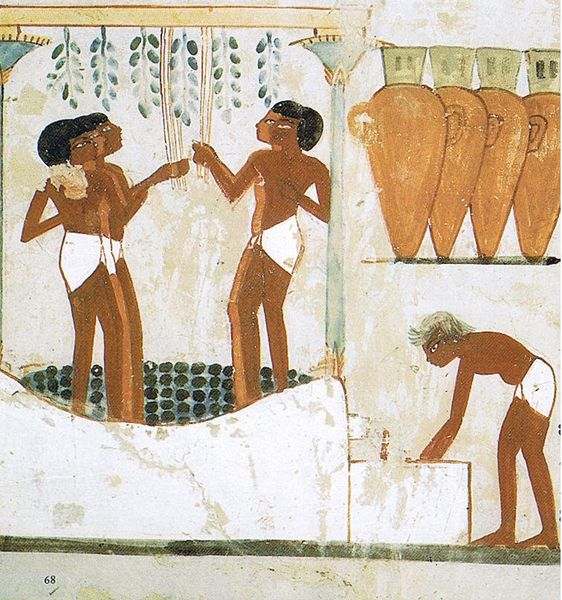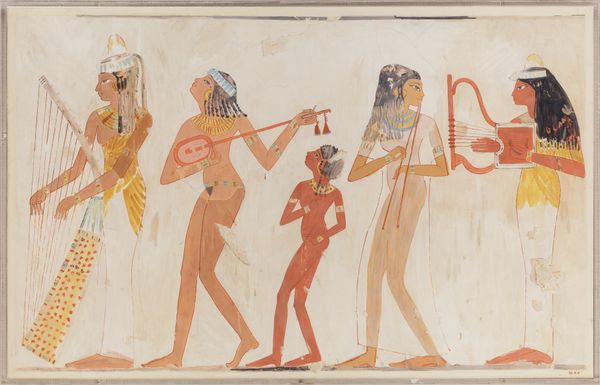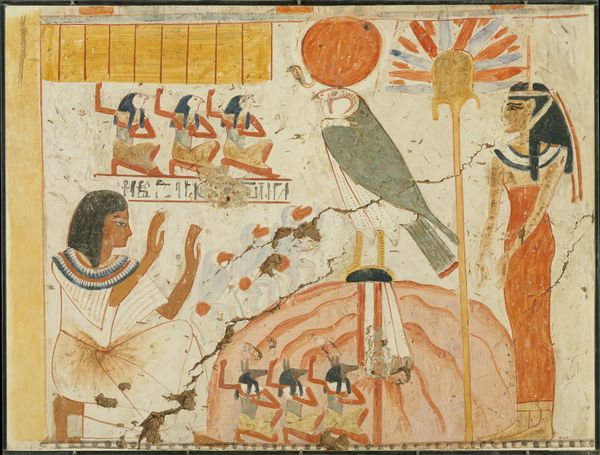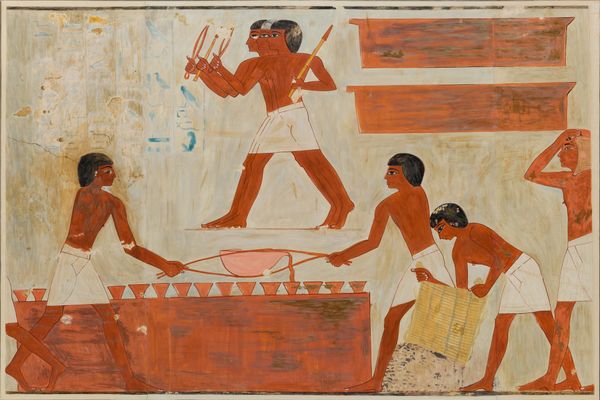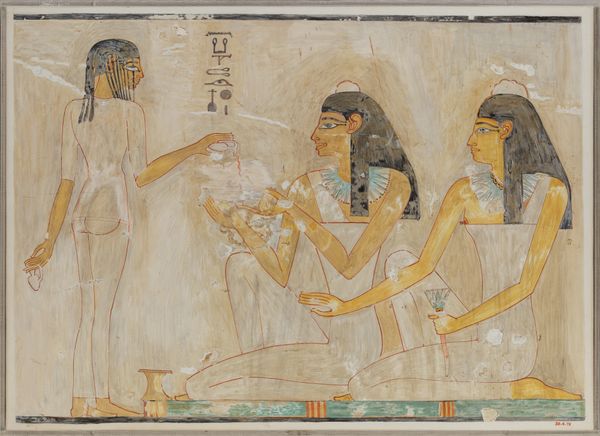
watercolor
#
narrative-art
#
landscape
#
ancient-egyptian-art
#
figuration
#
watercolor
#
egypt
#
men
#
genre-painting
#
history-painting
#
mixed media
#
watercolor
Dimensions: Facsimile: H. 41× W. 68.5 cm (15 9/16 × 26 in.); Framed: H. 42.5 × W. 69.9 cm (16 3/4 × 27 1/2 in.); Scale. 1:1
Copyright: Public Domain
Curator: This watercolor painting is entitled “Men Gathering Papyrus.” It comes to us from ancient Egypt, around 1479 BC. You can find it in the Metropolitan Museum of Art. Editor: It strikes me as being beautifully balanced. The figures are dynamic, almost frozen in a narrative moment. What really grabs me is the strong horizontal composition and subdued tonality which evokes feelings of peaceful harmony in contrast to the labors being performed. Curator: Indeed. Papyrus held enormous cultural significance in ancient Egypt, it was much more than just a simple resource. We see here a group of men working to gather and likely prepare the material, which underpinned communication, record-keeping, and even religious practices. Its usage certainly impacted Egyptian society and administration. Editor: The symbols associated with papyrus are significant too. In tomb paintings, bundled papyrus can represent new life and regeneration. Looking closer at the men, their physical features, what are your thoughts on their significance in representing society? Curator: Depictions of labor often served multiple functions in Egyptian art, not only illustrating everyday life, but also reinforcing the social hierarchy and the role of pharaohs and other high officials in overseeing such activities. The workers, although rendered with some degree of realism, likely represent a generalized image of the laboring class, rather than specific individuals. We should remember it was not displayed for these workers, so it spoke to the elite. Editor: Right, their bodies rendered in a typical, stylized way and engaged in labor which links to beliefs in cyclical renewal. Even today, our associations with ancient Egypt include depictions like this, repeated over millennia, from tourist trinkets to scholarly journals. Curator: And that lasting symbolic resonance reinforces how imagery can actively construct and sustain collective memory. The ongoing presence and manipulation of Egyptian imagery contribute to modern understandings and perceptions of the ancient world, shaping both cultural identity and popular culture. Editor: Absolutely. Analyzing "Men Gathering Papyrus", the painting not only depicts a slice of ancient life but reflects an evolving dialogue between then and now, influencing how we understand the past and envision our future. Curator: The impact of that resonance is profound. What a fitting close to our experience with this image today.
Comments
No comments
Be the first to comment and join the conversation on the ultimate creative platform.

